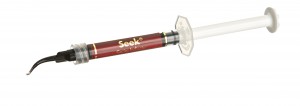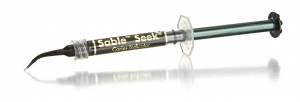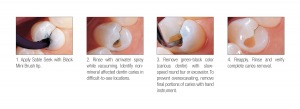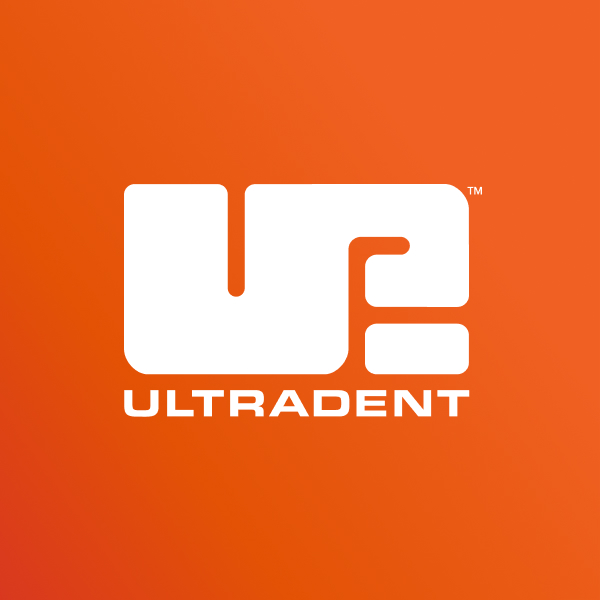“There was a time, maybe 15–18 years into my practice as a dentist that in regards to using a caries indicator, I thought, ‘I think I’m a reasonably good dentist. Shoot, if I can’t identify caries then something is wrong with me!’” says Dr. Fischer, president and CEO of UItradent Products, Inc. “Finally, I decided to give one of the caries indicators that were on the market at the time a try and quickly discovered that something was wrong with me!” he laughs.

Ultradent’s caries indicators, Sable™ Seek® and Seek® identify, as Dr. Fischer mentioned above, demineralized dentin in difficult-to-see places—for example, under the overhanging enamel of Class I, II, or III preparations, or along the DE junction of the preparation. Green Sable Seek helps to prevent over-excavating deep caries, which can lead to pulp exposure. Non-mineral dentin should be removed to improve the bond strength of the entire restoration. Red Seek is easily visible on dark dentin and provides a fast, effective way to locate calcified root canal orifices.

To use a caries indicator properly, follow the below steps:

“Yes, I believe all clinicians should be using a good caries indicator because ultimately, it’s a way of assuring that you are doing all that you can to give the best care to your patient—the same type of care you’d want to give your spouse or your child,” Dr. Fischer concludes.
To learn more about Ultradent Seek and Sable Seek Caries Indicators, please call 800.552.5512, or visit ultradent.com.







